Code Green Solutions

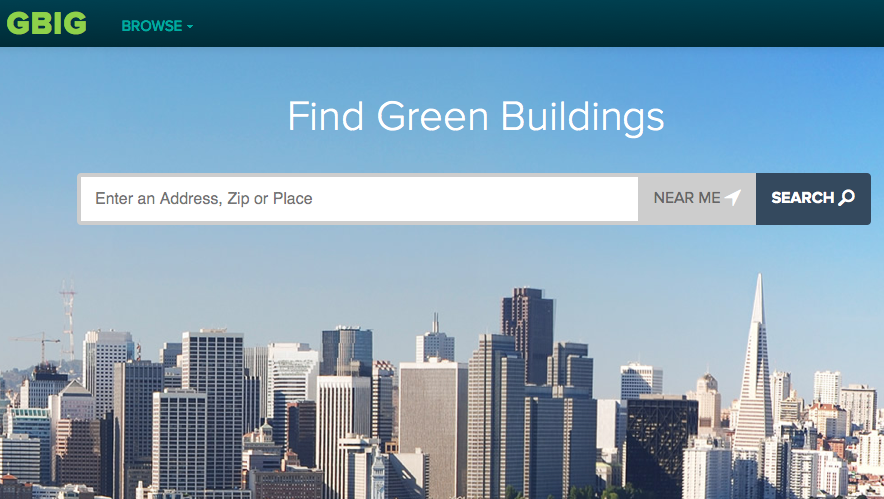
GBIG is a global information platform for the real estate industry designed to further accelerate market transformation. It empowers users with relevant market intelligence that highlights companies, products, services and strategies connected to the world’s highest performing buildings. GBIG delivers actionable insights through three fundamental offerings: project transparency, market context, and timelines.
Project Transparency
GBIG goes beyond an asset’s LEED rating to show a deeper level of detail that explains why a building is ‘green.’ By translating the impacts of achieved LEED credits into performance metrics, GBIG sheds light on what the points actually mean to the owners, occupants and investors who encounter the building in the real world. For example, we can “unpack” a LEED for Existing Building (LEED-EB) certification to look at individual dimensions of energy efficiency (e.g., ENERGY STAR 93), transportation (e.g., 25% reduction in conventional commuting trips), water efficiency (e.g., 50% reduction in potable landscape water use), or materials and resources (e.g., 70% diversion of waste).
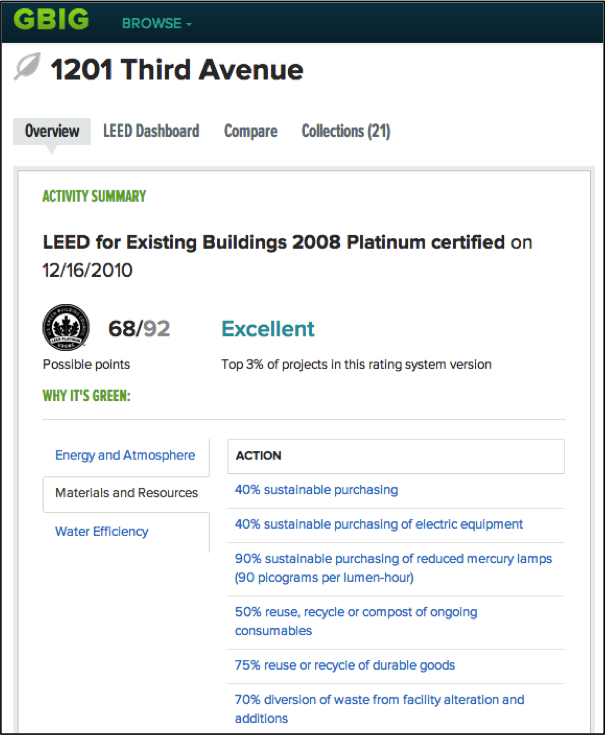
Project Transparency: The “Why It’s Green” section of the Project Overview page explains what was done to make this building greener.
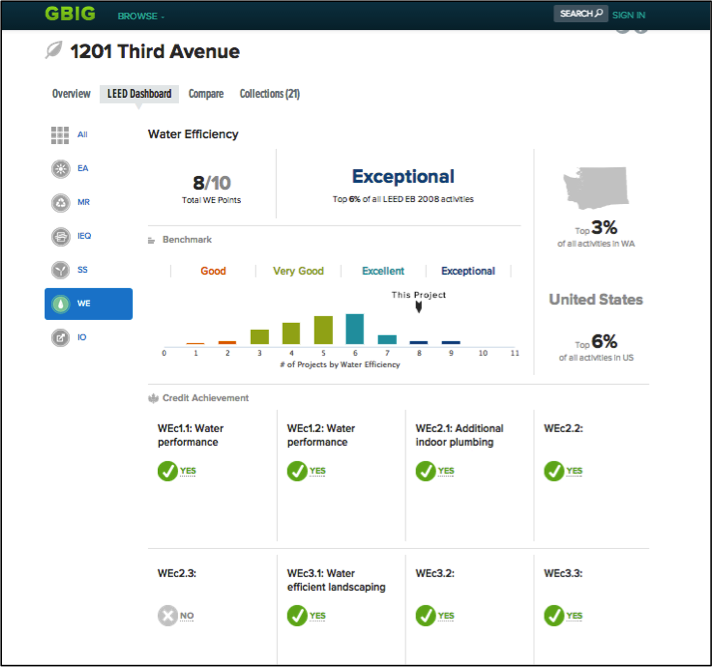
Project Transparency: The LEED Dashboard “unpacks the plaque” to show the individual strategies pursued to achieve LEED certification.
Market Context
Green building is intended to move markets, so it is often useful to understand which direction markets are moving. GBIG provides new insights into the high performance dimensions that can drive market behavior. For example, we can understand this particular office building in the context of the other 726 GBIG buildings within the City of Seattle (http://www.gbig.org/places/6765) or the 1,855 GBIG buildings in the entire Seattle-Tacoma-Bellevue metropolitan statistical area (http://www.gbig.org/collections/9594). GBIG presents place-based summary statistics that enable comparisons between markets, so users can see the differences in trends and patterns by region, district or country and identify areas of growth and opportunity.
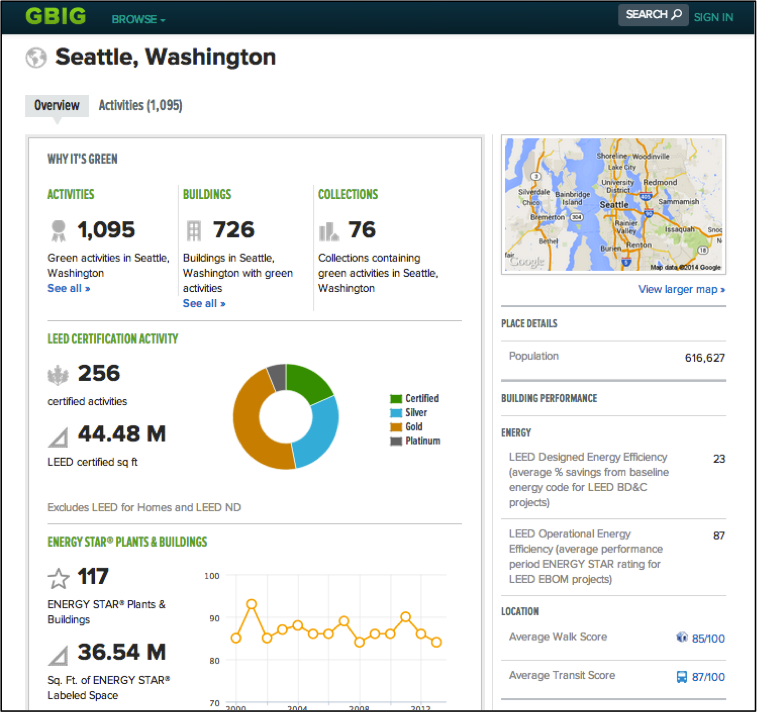
Market Transparency: GBIG ‘Place Profiles’ give a snapshot of overall levels of green building activity, trends in LEED certification and Energy Star scores, and the growth of credentialed green building professionals.
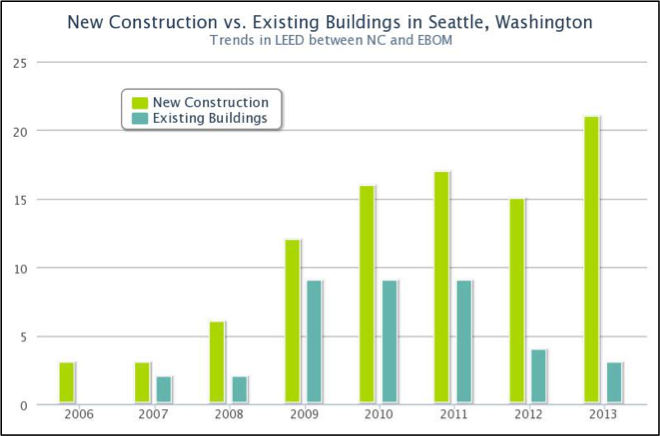
Market Transparency: GBIG presents data in the form of charts and graphs, revealing the trends and patterns in green building activity within a selected location. In this instance, the graph displays the number of LEED projects certified per year under both EB and NC rating programs.
Timelines
Understanding how an asset has performed over time tells us a lot about how a building has been managed and maintained and informs our assessments of value and “green-ness”. GBIG timelines aggregate data from a multitude of sources and display green building accomplishments, events and activities in chronological order. This helps us see the impact of discrete green building interventions, and identify the buildings that have consistently been top performers year after year.

Timelines: This building features a Timeline with multiple LEED certifications, Energy Star labels, and other activities between 2004 and 2014 encompassing new construction, operational energy benchmarking, and green facilities management.
Collectively, these three GBIG fundamentals provide us with more in-depth and contextual perspectives on green building around the world, and yet they are just the beginning of insights you can uncover when exploring GBIG.